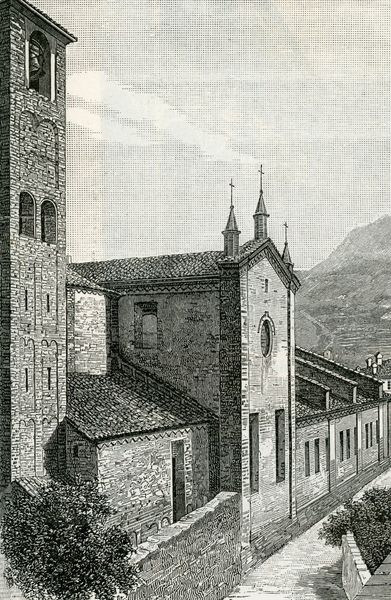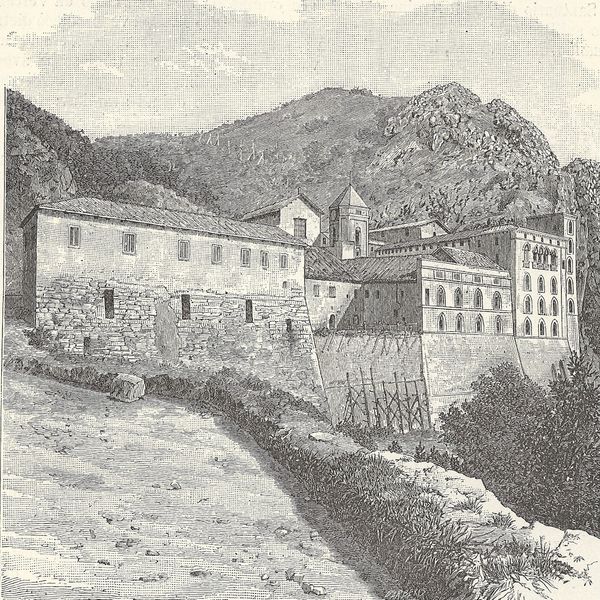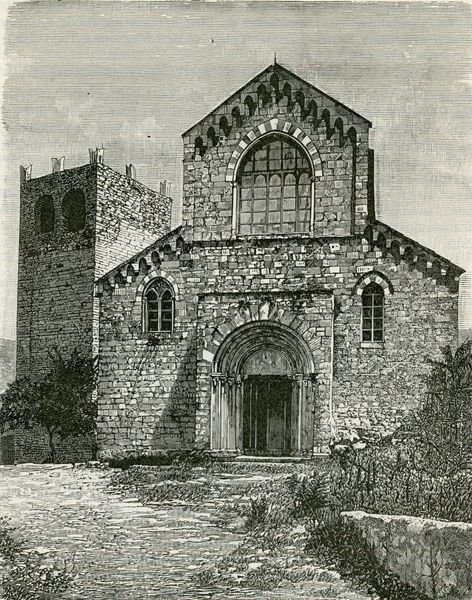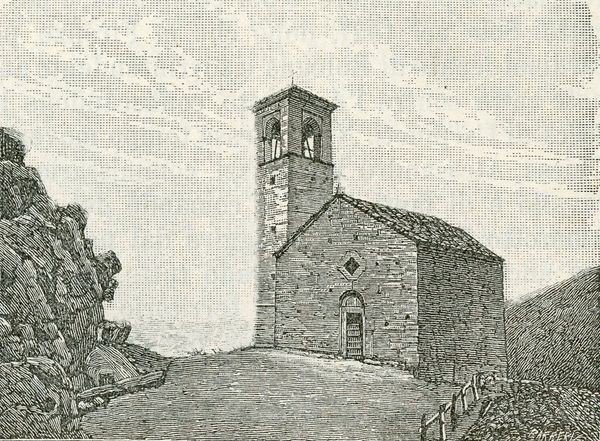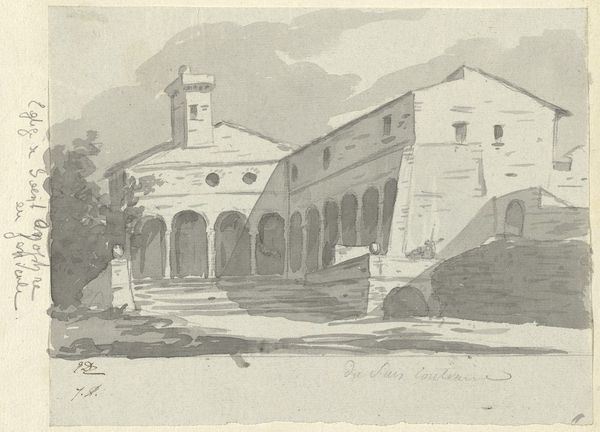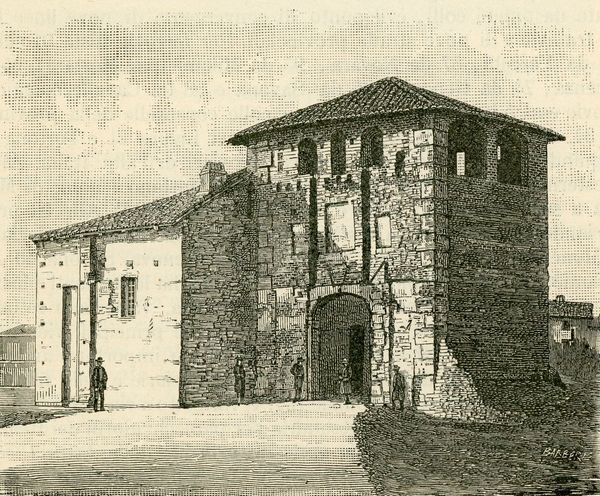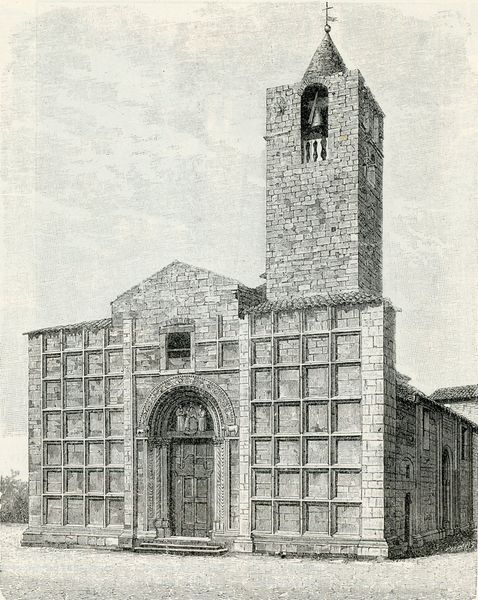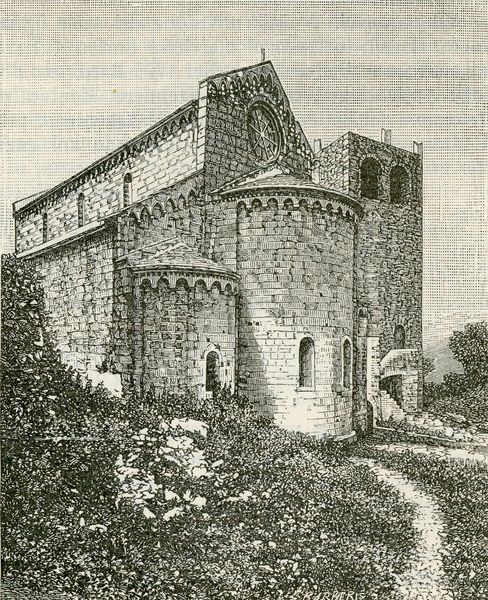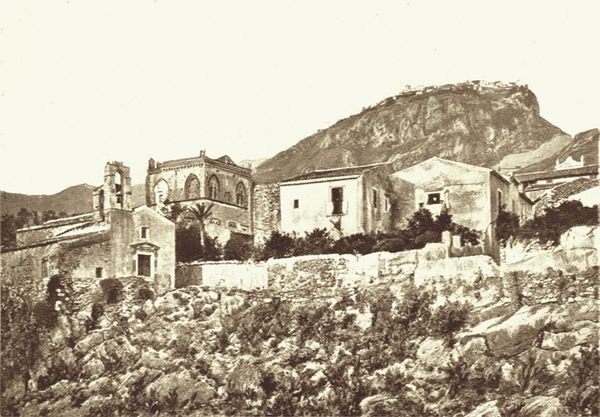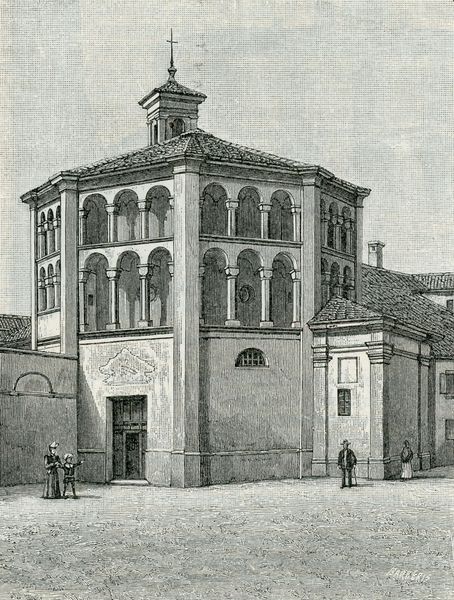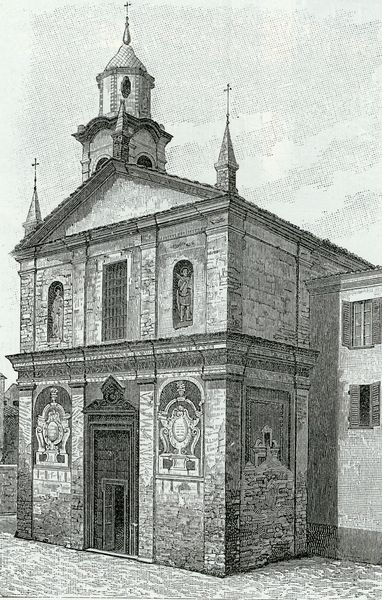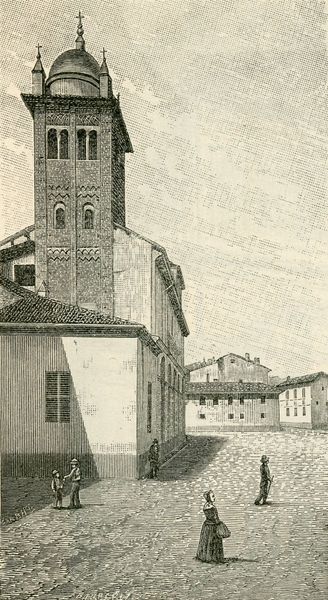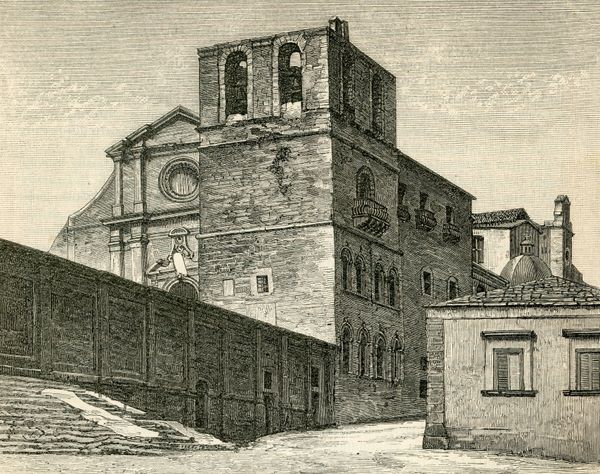
#
pen and ink
#
architectural sketch
#
landscape illustration sketch
#
aged paper
#
sketch book
#
etching
#
sketchwork
#
pen-ink sketch
#
pen work
#
architecture drawing
Copyright: Public domain
Curator: Well, that’s serene. A sort of quiet stillness permeates this…drawing? Etching? Editor: Both, actually. This is "Abbey of Santa Fede in Cavagnolo" by Giuseppe Barberis, rendered in pen and ink, circa 1890. Look closely; you'll see the detail Barberis coaxes out of those simple tools. The way the stone almost seems to vibrate in the light. Curator: It does, doesn’t it? And the mountains in the background – they’re not just back there. They feel… connected to the building. Rooted somehow. It's more than just a visual record; there's something… emotional happening here. Editor: Architecture is never politically neutral. Churches like this were often built to assert power and control in the community. Think about how that architectural design mirrors systems of belief and reinforces societal hierarchies. Curator: Hmm. True, that stoic Romanesque architecture can feel quite imposing, almost a fortress. And yet, Barberis captures this particular scene in such a humble way; he focuses less on that assertion and more on… a human scale. Did you notice those two tiny figures standing near what looks like an adjacent building? It provides scale but also softens that architectural severity. Editor: They do suggest a certain timelessness, a continuity of human presence. Their placement emphasizes how religion and daily life were often inextricable, although their obscured positions still suggest an asymmetrical power balance and structural disadvantage. Curator: I hadn’t considered their poses. What is clearly a detailed sketch transforms into a lens through which to study historical Italian class disparities? What else might it reveal? Editor: I encourage all who engage with such work to look critically, beyond aesthetic appeal, and consider whose stories are being told and from whose perspective. The architectural details communicate both sacred space and the social fabric surrounding that space, thereby providing us with an intimate glimpse into that precise historic and politicized intersectionality. Curator: Precisely. Next time I find myself overwhelmed, I might think of Barberis' "Abbey of Santa Fede", a calming reminder of nature, faith, community… and the power of close observation. Editor: Agreed. This work provides the perfect prompt to explore the connections that bridge aesthetic beauty, history, and contemporary theory.
Comments
No comments
Be the first to comment and join the conversation on the ultimate creative platform.
